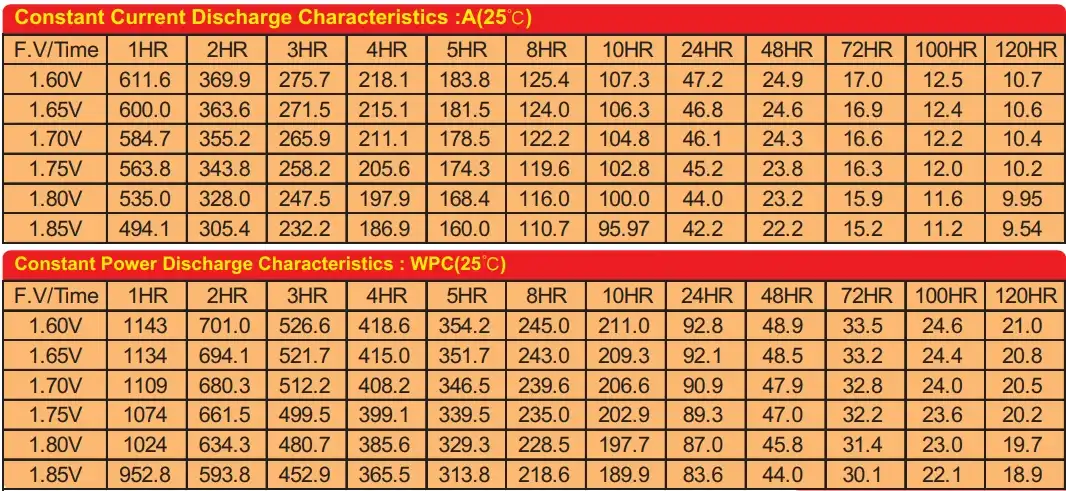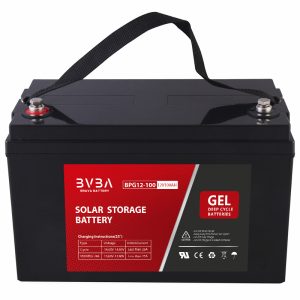
BPG2-1000C 2V1000Ah Lead Carbon Battery
Product Description
Model: BPG2-1000C
BRAVA VRLA SLA 2V1000Ah Lead-carbon batteries use functional activated carbon and graphene as carbon materials, which are added to the negative plate of the battery to make lead carbon batteries have the advantages of both lead-acid batteries and super capacitors. It not only improves the ability of rapid charge and discharge, but also greatly prolongs the battery life. It is specially designed for daily heavy cyclic discharge use with feature low boost charge voltage, it should not be used under float charge, it must be charged and discharged daily for cyclic use.
Voltage : 2v
Capacity : 1000Ah
Size : 471*171*330*342mm
Weight : 62.0kg
Terminal : M8
Tags: Lead Carbon Battery factory/supplier 12v Lead-Carbon battery manufacturer Lead-acid battery OEM custom 2V1000ah Lead carbon Battery

BP2-1000C 2v1000Ah Lead Carbon battery General Features & benefits:
- 15-18 years design life(25℃)
- Best suited for Deep cycle applications and their life is generally in the 500 to 5000 cycles range
- Spill proof
- Maintenance free
- Lowest cost-per-month (cost / months of life)
- Lowest cost-per-cycle (cost / life cycles)
- Adopt advanced GEL technology
- High purity raw material
- Thick plate design
- Special grid alloy and paste formula
- High-temperature curing technology.
Product Application
- All purpose
- Mobility,Electric vehicles
- UPS, backup power
- Telecom stations and power stations
- Solar/wind energy storage systems
- Home energy storage system
- Smart power grid and micro-grid system
- Distributed energy storage system
- Solar and wind energy storage system
- Solar power generation grid or off-grid energy storage system
- Generation and battery hybrid energy storage system
GEL Battery: | Feature | | Applications | | Related Products |
Standards & Certifications
- Compliance with IEC 60896 standards, EU Battery Directive
- UL, CE Certified
- Manufactured in ISO45001,ISO 9001 and ISO 14001 certified production facilities
2v1000Ah GEL Battery Specifications
| Rated Voltage |
2V
|
|
| Nominal Capacity | 1000.0Ah |
(C10 ,1.75V/cell)
|
| Dimension | Length |
471±2mm ( 18.5 inches)
|
| Width |
171±1mm (6.73 inches)
|
|
| Container Height |
330±1mm 13.0 inches)
|
|
| Total Height |
342±1mm (13.5 inches)
|
|
| Weight |
Approx 62.0 Kg (136.7 lbs)
|
|
| Terminal |
M8
|
|
| Container Material |
ABS
|
|
| Rated Capacity(25℃) | 1065.8 Ah |
(20hr, 1.75V/cell)
|
| 1000.0 Ah |
(10hr,1.75V/cell)
|
|
| 868.0 Ah |
(5hr,1.75V/cell)
|
|
| 767.5 Ah |
(3hr,1.75V/cell)
|
|
|
(1hr,1.60V/cell)
|
||
| Max. Discharge Current |
4000A (5s)
|
|
| Internal Resistance(25℃) |
Approx 0.42mΩ
|
|
| Operating Temp. Range | Discharge |
-15~50℃ (5~122℉)
|
| Charge |
-20~40℃ (-4~104℉)
|
|
| Storage |
-15~40℃ (5~104℉)
|
|
| Nominal Operating Temp.Range |
25±3℃ (77±5℉ )
|
|
| Cycle Use | Voltage 2.30V~2.35V at 25℃ (77℉)Temp. Coefficient -4mV/ ℃ | |
| Standby Use |
Voltage 2.26V~2.28V at 25℃ (77℉)Temp. Coefficient -3mV/℃ |
|
| Effect of temp. to Capacity | 40℃ (104℉) |
103%
|
| 25℃ ( 77℉) |
100%
|
|
| 0℃ ( 32℉) |
86%
|
|
| Self Discharge |
BPG Lead Carbon series batteries may be stored for up to 6 months |
|
Battery Layout

2v1000Ah Battery Charging/Discharge Curve

Battery Discharge Characteristics

Lead Carbon GEL Battery Models
| Model | Rated Voltage(V) | Capacity (Ah) | L(mm) +0/-2 | W(mm) +0/-2 | H(mm) +0/-3 | TH(mm) +0/-3 | Gross Weight(kg) | Terminal | mΩ |
|---|---|---|---|---|---|---|---|---|---|
| BPG12-75C | 12 | 75 | 260 | 169 | 211 | 216 | 24.0 | F15(M6) / F11(M6) | 7.5 |
| BPG12-100C | 12 | 100 | 328 | 172 | 215 | 220 | 32.0 | F5(M8) / F12(M8) | 5.5 |
| BPG12-150C | 12 | 150 | 483 | 170 | 241 | 241 | 45 | F5(M8) / F12(M8) | 4.6 |
| BPG12-175C | 12 | 175 | 532 | 207 | 214 | 219 | 55 | F16(M8) / F12(M8) | 4.5 |
| BPG12-200C | 12 | 200 | 522 | 240 | 219 | 224 | 62.5 | F16(M8) / F10(M8) | 4.0 |
| BPG12-225C | 12 | 225 | 522 | 240 | 219 | 224 | 66.0 | F16(M8) / F10(M8) | 3.7 |
| BPG2-200C | 2 | 200 | 170 | 106 | 330 | 342 | 11.0 | F10(M8) | 0.8 |
| BPG2-300C | 2 | 300 | 170 | 150 | 330 | 342 | 16.0 | F10(M8) | 0.72 |
| BPG2-400C | 2 | 400 | 196 | 171 | 330 | 342 | 19.0 | F10(M8) | 0.68 |
| BPG2-500C | 2 | 500 | 241 | 171 | 330 | 342 | 25.5 | F10(M8) | 0.6 |
| BPG2-600C | 2 | 600 | 285 | 171 | 330 | 342 | 29.5 | F10(M8) | 0.55 |
| BPG2-800C | 2 | 800 | 383 | 171 | 330 | 342 | 38.5 | F10(M8) | 0.5 |
| BPG2-1000C | 2 | 1000 | 471 | 171 | 330 | 342 | 51.0 | F10(M8) | 0.48 |
| BPG2-1200C | 2 | 1200 | 471 | 171 | 330 | 342 | 59.5 | F10(M8) | 0.42 |
| BPG2-1500C | 2 | 1500 | 355 | 337 | 330 | 342 | 80.0 | F10(M8) | 0.4 |
| BPG2-2000C | 2 | 2000 | 476 | 337 | 330 | 342 | 106.0 | F10(M8) | 0.35 |
| BPG2-2500C | 2 | 2500 | 476 | 337 | 330 | 342 | 118.0 | F10(M8) | 0.33 |
| BPG2-3000C | 2 | 3000 | 696 | 340 | 330 | 342 | 159.0 | F10(M8) | 0.3 |
Q&A
What is the difference between lead-carbon batteries and ordinary lead-acid batteries?
Lead-carbon batteries have been developed from traditional lead-acid batteries to provide better deep cycling ability and reduce sulphation of the negative plates when used in partial states of charge. The first lead-carbon batteries were developed by the CSIRO (Govt. scientific research facility) in Australia in the mid-2000’s and commercialised around 10 years ago, first known as the “Ultra battery” and subsequently developed further by several lead battery manufacturers. Brava have been producing the Brava series of lead-carbon batteries since 2013. See the Technical section on this website for a detailed explanation of lead carbon technology.
The negative plate of a lead-carbon battery contains carbon. Different techniques are used by different lead-carbon battery manufactures to create this mix of lead and carbon on the negative plate. Some wrap the negative plate in a carbon film, others mix the lead and carbon in a matriculates, and others use proprietary nano-carbon particles.
The use of highly conductive carbon on the negative plate gives the lead-carbon battery the characteristics of a “super capacitor” that can more rapidly absorb charge current, and more rapidly deliver current under load than traditional lead-acid batteries. This means they can be recharged faster and can deliver higher peak load currents without damage compared to other lead-acid battery types.
How long will a Brava lead-carbon battery bank last?
There are a few key factors that will determine how long your battery bank will last. These are
- how deeply you regularly discharge the batteries (“depth of discharge” or DoD)
- whether you have a stable temperature environment
- if you can get them fully recharged regularly
If you discharge the batteries on average to 50% DoD once a day, have them inside in a stable temperature that ranges from 15 to 25 °C, and have enough solar panels to recharge them completely when you get a full sunny day, then you can expect 10 to 12 years life. If you discharge less than this you can get a lifetime of 15 years or more. On our Technical page there is a chart of cycle life vs depth of discharge which gives you an idea of how many times you can cycle the batteries for a given DoD. Lead carbon batteries have cycle counts for a given DoD that are 3 or 5 times that of typical flooded lead-acid batters or GEL/AGM batteries.
High temperatures are a problem for all battery types. Ambient temperatures over 30 °C will cause corrosion of the positive battery plate internally and can lead to battery failure within a few years. If your battery bank is kept in an outside shed ensure the building is not subject to direct hot summer sun that could heat it up internally.
Although lead-carbon batteries can handle being used in a partial state of charge for extended periods, they do need to be fully charged from time to time to keep their full operating capacity. Over winter it is very easy to end up with your battery bank in a permanent state of 50% discharge or worse. You need to fully charge the batteries at least once per month. This can be achieved with a generator, or more economically these days by having more solar panels than you think you might need, so that in winter you can generate enough current to fully charge batteries on a sunny day. You may end up with excess solar capacity in summer, but most modern controllers can simply ignore this excess capacity without causing harm – but do check your own controllers specifications.
Can I replace my old flooded lead-acid or GEL/AGM battery bank with lead-carbons?
In most cases the answer is yes. As long as your solar charger settings can be changed to the slightly lower settings needed for lead-carbon batteries then they can easily replace your old battery bank. You will have the bonus of more usable energy in the new battery bank because you can discharge the lead-carbon batteries more deeply without damage compared to traditional lead-acid batteries. Most older lead-acid battery manufactures recommend that their batteries be discharged by no more than 30% to achieve a useful life of 5 years. The same size lead-carbon battery bank can be discharged to 50% and achieve a useful life of 10 years plus.
Do lead-carbon batteries need regular maintenance?
Brava lead-carbon batteries are sealed valve-regulated lead-acid (VRLA) type batteries. This means the electrolyte that moves energy between the positive and negative battery plates does not need “topping up” with water as with flood battery types. It is held between the plates in a thick gel paste and the battery itself is sealed apart from a safety valve which only releases gas if the battery overheats or is seriously overcharged. Brava lead-carbons can be mounted in any orientation – on their side or upside down, and have the added advantage that they can be transported easily and safely as they are not classed as dangerous goods.
Are they safe to have inside? What about gases being given off?
In normal daily use no gas is given off from the Brava series batteries. They do not give off flammable hydrogen gas like flooded lead-acid batteries unless they are severely overcharged, overheated or damaged. They can be safely used inside a building, and this also helps keep them at the optimum operating temperature of 15 to 25 degrees C. There is a New Zealand standard – AS/NZS 5139 – that gives details on how to install a battery bank inside a building. This includes not installing in a habitable room such as a living room or bedroom. Installation in a garage, utility room or laundry is fine as long as the guidelines are followed. See the Technical section on Installation for more details.
What is the warranty on Brava lead-carbon batteries?
All batteries are unconditionally warranted to meet their full performance specification for a period of 12 months. In the event that they do not, the faulty battery will be replaced.
Batteries that are operated with an average DoD of 65%, with no more than 1 cycle per day, and kept at a temperature of 15 to 25 °C will be warranted for a period of 5 years from date of purchase to meet 80% of their original capacity specification. In the event that they do not, a credit calculated at a pro-rata rate from years 1 to 5 will be given towards the replacement cost, or an equivalent refund of the original purchase price will be given.
The warranty from Coromandel Batteries is backed by the Brava factory warranty, issued specifically to our company for the entire range of Brava series batteries. This can be viewed in the document here.
How efficient are lead-carbon batteries at converting solar energy to stored energy?
One way to measure battery efficiency is to measure how much energy has to go back into a battery during charging to make up for the energy used during discharge. Figures given by Trojan, a major battery manufacturer of all battery types, say flooded lead-acids need 107 to 120% as much energy to recharge as they produce during discharge. GEL/AGM type batteries (which include Brava lead-carbon) are somewhat more efficient with 105 to 109%. Lithium ion are 105 to 115%. There is quite a range in these efficiencies because the efficiency changes depending on the state of charge. A battery at a 50% state of charge has a higher efficiency than one that is nearly fully charged. So over 95% of the energy coming from your solar panels will get into your batteries when they are half charged, but as they get to 90% full the efficiency will drop to nearer 80% and even less as the last bit of energy is squeezed into the batteries. Because Narada lead-carbon batteries can operate at partial states of charge without sulphating to the extent that flooded or other AGM batteries do, they can generally be operated with higher conversion efficiencies than other battery types, resulting in less wasted energy. Remember that there are other inefficiencies in your system also – such as the inverter. The inverter will waste between 5 and 15% of the energy it takes from your batteries at low voltage (48, 24 or 12V DC) to convert mains voltage (240V AC). So when you combine battery efficiency and inverter efficiency you can easily be losing 20% of your solar power compared to usable mains power at the 240V socket.
Can you use a 2V200Ah charger to charge a 2V1000Ah battery?
Yes, the amp hour rating gives you an idea of the capacity of the battery and charger. The charger and battery need to have the same voltages. i.e. dont try to charge a 6v battery with a 12 v charger. The battery will be charged until it is full.
What happens if you place 2v1000ah in the place of 2v200ah?
the 2v1000ah battery will give out power for longer without being charged in the case of a car it means it would take longer before the batery would run flat from leaving something switched on
 |
 |
 |
 |
 |

















